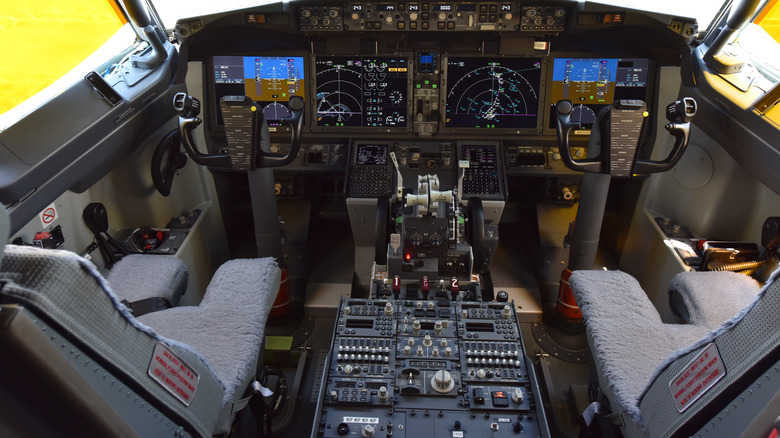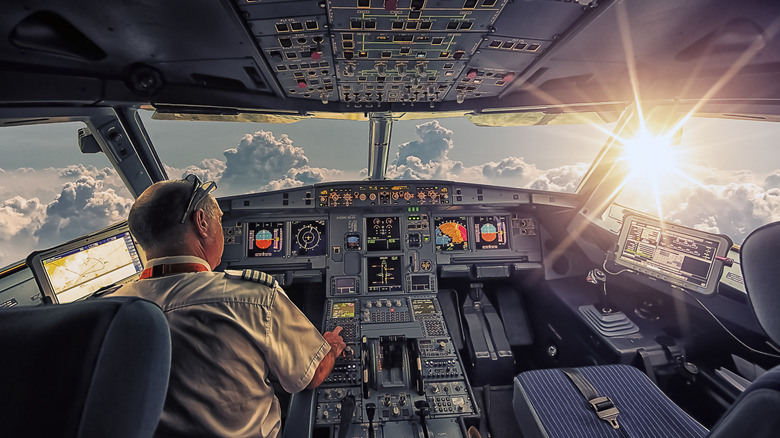Can A Boeing Pilot Fly An Airbus Jet?
In commercial aviation, Boeing and Airbus dominate the market. For commercial pilots, this duopoly means that there is a very high chance that they will be flying one of the big two's aircraft at some point during their career. At a quick glance, it can be difficult to tell Airbus and Boeing aircraft apart — at least from an exterior viewpoint. However, from a pilot's viewpoint, the picture is radically different. For instance, sitting in the cockpit of a Boeing 737 looks entirely different from sitting in the same seat on the Airbus equivalent model — the Airbus A320.
The most obvious visible difference to confront the pilot will be the control column. In the case of the Boeing 737, this is a more "familiar" yoke-type controller, whereas the Airbus is controlled by a side-controller that is more akin to a joystick. While this is a visibly striking difference, the differences go beyond mere aesthetics. The design ethos of both companies is apparent in how their aircraft interact with pilots. Airbus planes can be described as using the pilots to aid the computer that flies the plane. With Boeing, the story is the opposite — the computers aid the pilots to fly the plane. In short, this means that a Boeing pilot won't be able to jump into the captain's seat of an Airbus jet and fly it successfully, at least not without knowing how to work the flight computers and avionics suite.
Do pilots fly more than one type of aircraft?
For a Boeing pilot unfamiliar with an Airbus, expecting to jump into the cockpit and fly it is unrealistic. Yet, many pilots make the transition. So, just how does a pilot swap from Boeing to Airbus? It's down to training and gaining a type rating to fly a particular aircraft. A type rating is mandatory for any pilot wanting to fly a plane with a maximum takeoff weight over 12,500 pounds, or any aircraft using a jet engine. It's also an FAA regulation that a pilot must be type-rated on the plane they're flying. A type rating is also a mostly model-specific system. For instance, a pilot with a Boeing 737 type rating can't fly the Boeing 777 — one of the best commercial aircraft to fly– without the correct rating. However, gaining the correct type rating across models from the same manufacturer is undoubtedly easier thanks to the similar design ethos that runs through the models.
The story is different for Boeing pilots wanting to make the transition to Airbus. In this instance, gaining the type rating would require substantial retraining. Among the challenges of such a transition are the requirements to get new certifications based on the cockpit specifications, operational philosophies, and flight dynamics.

